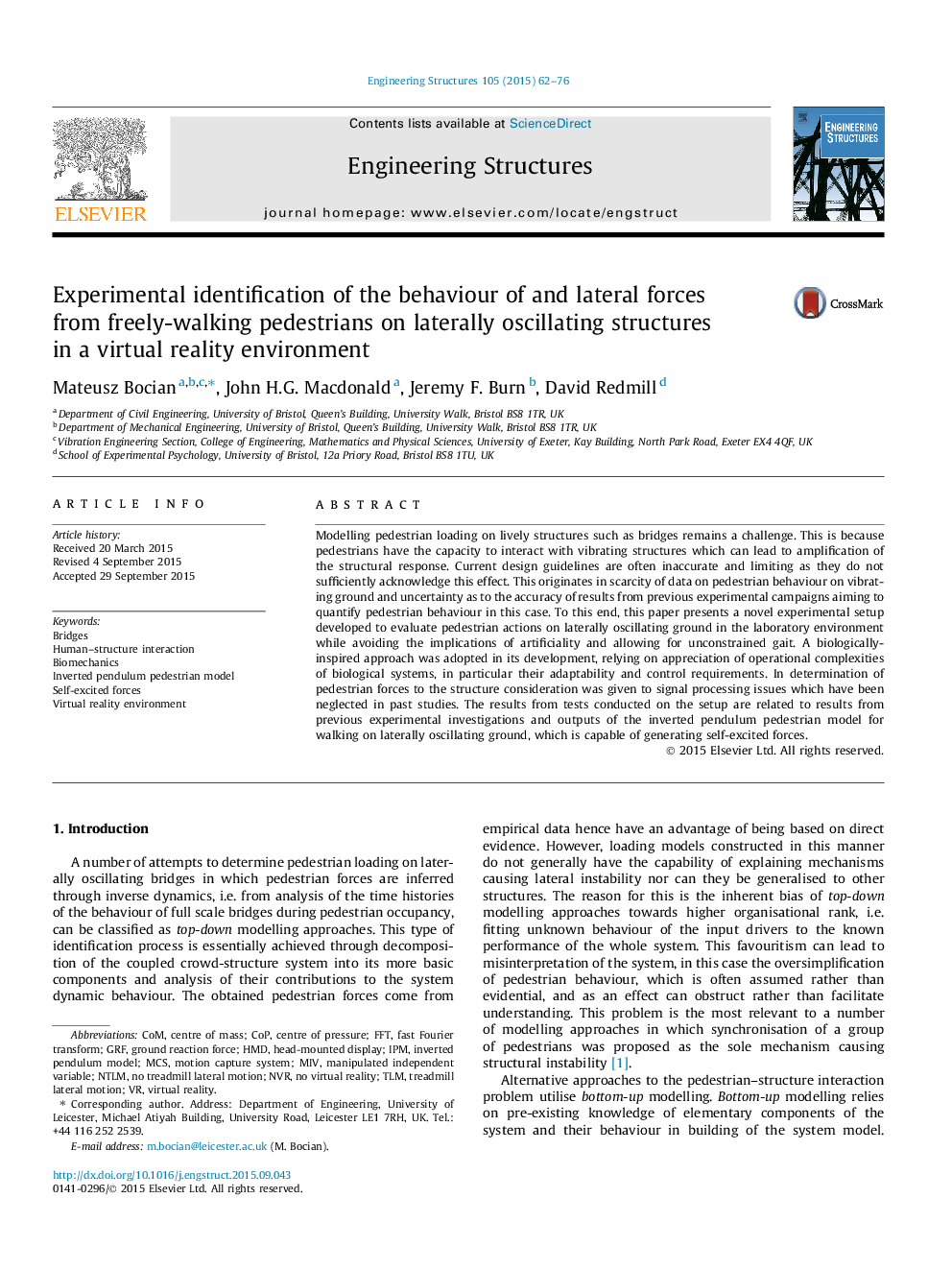| Article ID | Journal | Published Year | Pages | File Type |
|---|---|---|---|---|
| 6740182 | Engineering Structures | 2015 | 15 Pages |
Abstract
Modelling pedestrian loading on lively structures such as bridges remains a challenge. This is because pedestrians have the capacity to interact with vibrating structures which can lead to amplification of the structural response. Current design guidelines are often inaccurate and limiting as they do not sufficiently acknowledge this effect. This originates in scarcity of data on pedestrian behaviour on vibrating ground and uncertainty as to the accuracy of results from previous experimental campaigns aiming to quantify pedestrian behaviour in this case. To this end, this paper presents a novel experimental setup developed to evaluate pedestrian actions on laterally oscillating ground in the laboratory environment while avoiding the implications of artificiality and allowing for unconstrained gait. A biologically-inspired approach was adopted in its development, relying on appreciation of operational complexities of biological systems, in particular their adaptability and control requirements. In determination of pedestrian forces to the structure consideration was given to signal processing issues which have been neglected in past studies. The results from tests conducted on the setup are related to results from previous experimental investigations and outputs of the inverted pendulum pedestrian model for walking on laterally oscillating ground, which is capable of generating self-excited forces.
Keywords
Related Topics
Physical Sciences and Engineering
Earth and Planetary Sciences
Geotechnical Engineering and Engineering Geology
Authors
Mateusz Bocian, John H.G. Macdonald, Jeremy F. Burn, David Redmill,
